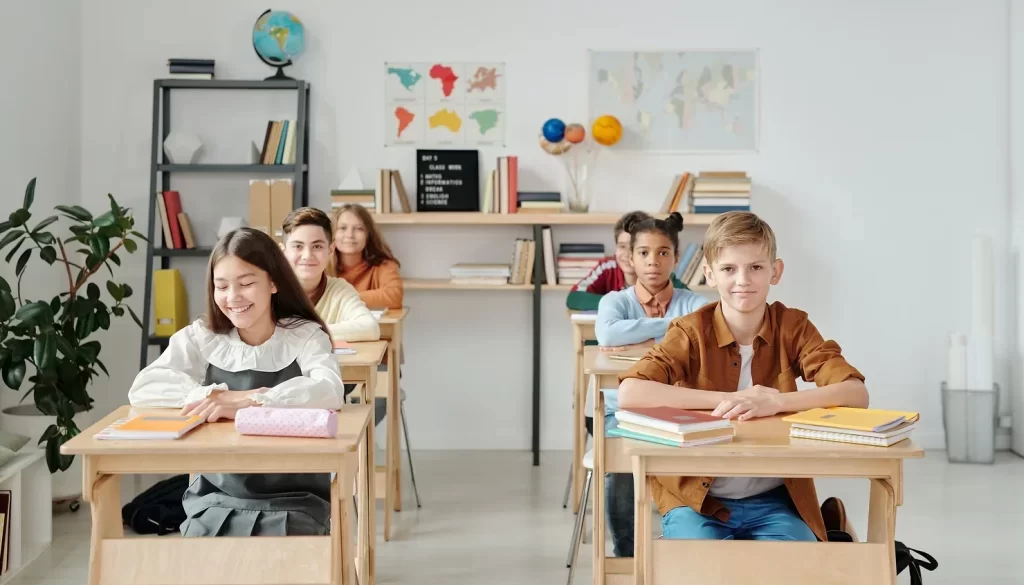Cracking the IEP. How to qualify: Part II

An IEP makes all the difference in helping ADHD children grow and thrive at school. Here’s what to expect from the process and how to navigate your way as a parent to IEP success!
An IEP, or Individual Education Plan, can make all the difference in helping your ADHD child succeed. The state-subsidized grant gives your child the resources and accommodations they need to flourish in the classroom. Qualifying, however, can be a long and drawn-out process. At best it will take about 60 days, but at worst, it can take several months.
Here’s how to champion your child’s needs and keep the IEP process moving smoothly.
Get Organized!
First off, now is the time to get organized!
Make sure you have a readily available printer, some sturdy files, and some labels. Any time you submit, collect, or receive documentation related to your child’s IEP, scan or copy and file it. The school may drag its feet or argue if and when IEP documents were, in fact, submitted.
That’s where your fantastic parent organizational skills come in. Just reach for your master file, pull out your copy, and present it with a flourish. It should keep the process moving along.
The IEP Referral
Next, let’s kick it off! To begin the IEP process, you must make a formal “IEP request.” It’s significant because the day your school receives your request marks when the school’s clock starts ticking. They have 5 days to process your referral request, granting it a yes or no, and a full 90 days to see the whole process through*.
Here’s how to request an IEP in two easy steps.
1. The referral letter. Submit a written IEP request to the school. You can write it yourself or request an IEP referral from your child’s teacher, family doctor, or health provider. It should cite the specific difficulties and reasons for your evaluation request, as well as any efforts you’ve made to help your child.
Here are some helpful IEP referral letter templates.
2. The formal submission. Now formally submit the IEP request to your child’s school. Make sure to get official proof of submission by either emailing the letter, dropping it off in person and asking the school to stamp and sign your copy or submitting via certified mail (keep your receipt!). And file it of
course 🙂
Congratulations, the IEP clock has begun ticking in your favor!
The IEP Evaluation
IEP request granted? Great, now it’s time for the school to evaluate your child. Each child’s evaluation process will look different depending on their difficulties. You, the parent, can’t choose which tests the school will conduct. However, you need to grant your testing consent for them to proceed.
Here’s how the IEP evaluation process looks:
1. Written parental consent. The school will outline relevant health and performance information they want to gather and the psycho-educational testing they want to perform. You’ll need to sign. File a copy, and note the date!
2. Performance review. The school must gather performance data to better
understand your child’s classroom and home life. You’ll be asked to help
collect formal reviews from teachers, educators, and therapists (if relevant).
The school will also review your child’s academic record and standardized
test scores. They’ll probably want a copy of your child’s medical records. And
you’ll need to fill out a questionnaire with your observations. It’s a lot of
paperwork, but the faster you move it along, the smoother the process.
3. Evaluation testing. The school psychologist or relevant personnel will then conduct psycho-educational testing. Common IEP evaluation tests include
- Wechsler Intelligence Scale for children (WISC)
- Behavior Assessment System for Children (BASC)
- School Function Assessment (SFA)
- Clinical Evaluation of Language Fundamentals
You can help ‘prep’ your child by gently explaining what to expect on the
test day so they’ll be less nervous.
IEP Review & Team
Once all the paperwork and test results are in, the school psychologist or qualified personnel will interpret the data and determine your child’s IEP eligibility. The school will then establish your child’s customized IEP team to discuss an action plan.
The team typically includes you (the parents), your child’s full-time teacher, a special-ed rep, the school psychologist, and the child. Additionally, you can invite anyone you think will best advocate for your child’s needs, such as a school advocate, a former special-ed teacher, or even a friend.
The school now has 30 days to call all IEP team members to the first meeting. You, as the parent, have the right to see the IEP evaluation results at least three business days before that first IEP meeting. Here is a sample request letter you can send by email.
IEP Eligibility meeting.
Woo-hoo! You’ve made it to the IEP meeting. Congratulate yourself on hitting this hard-earned milestone. It’s important because this is where the school will present you with a clear plan mapping out your child’s difficulties, their recommended services and accommodations, and goals and milestones for the current academic year (see IEP. It’s an ADHD game-changer to understand better what’s included).
As the parent and your child’s best advocate, you will want to make sure you feel the plan accurately provides the services needed to help your child along. To that effect, show the school that you take the process seriously. We recommend both parents or an additional child advocate attend. An attendance sheet will be passed around to ensure all IEP team members are present. Ask for a copy (and file it, of course;).
The meeting can run as long as three hours. Consider bringing cookies or snacks for the team. It shows goodwill and can help keep tensions down during potential disagreements. The IEP services and accommodations established now will be legally available to your child for three years. Make sure you feel they provide an accurate reflection of where your child’s at, as well as the tools needed to help them flourish.
While this may seem like a lot to handle, we promise that acting as your child’s advocate can be very empowering. You can open the doors that will give your child access to the tools they need. You have the power to help them succeed. So if you think your child has ADHD, take a deep breath, review the IEP steps, and get cracking!
We’re here to help and cheer you on.
Summary
- An IEP, or Individualized Education Program, will provide your ADHD child with the (free) school resources they need to succeed in the classroom.
- The IEP process is lengthy and involves a lot of paperwork. It helps to stay organized and informed, as well as move the various parties along.
- To determine IEP eligibility, expect a formal psychological evaluation, performance review, and more. It’s tedious, but we promise it’s worth it.
*Timing may vary according to state



